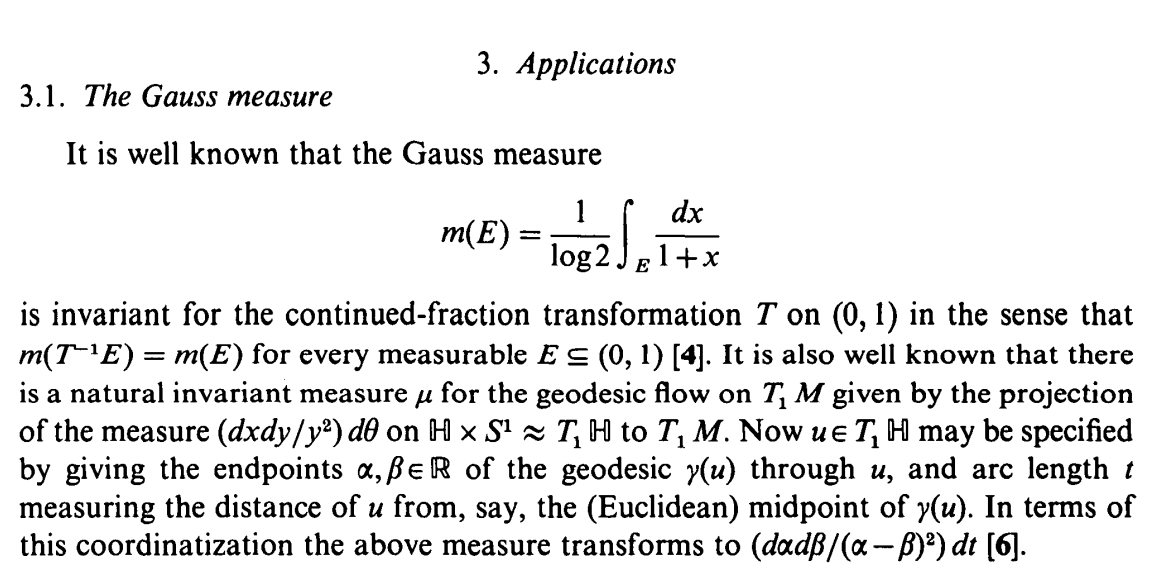$\newcommand{\diff}{\mathrm{d}}$This is a heavily edited version of my (a bit right, but mostly wrong) previous answer. I think that this is now correct (even got the signs right!).
$\newcommand{\HH}{\mathbb{H}}$Let $L = L_{\alpha, \beta}$ be the semicircle in $\HH$ (the upper-half plane) which is perpendicular to the real axis and which has end points at $\alpha$ and $\beta$. Breaking the symmetry of the situation, we assume that $\alpha < \beta$. We find that the centre of $L$ is $c = \frac{1}{2}(\alpha + \beta)$ and the radius of $L$ is $r = \frac{1}{2}(- \alpha + \beta)$. For later use we take $a = c + ir$ to be the apex (highest point) of $L$.
Note that $\diff c = \frac{1}{2}(\diff\alpha + \diff\beta)$ and $\diff r = \frac{1}{2}(-\diff\alpha + \diff\beta)$. Thus $\diff c\,\diff r = \frac{1}{4} \diff\alpha\, \diff\beta$. We deduce that:
$$\frac {\diff c\, \diff r}{r^2} = \frac{1}{4} \frac{\diff\alpha\, \diff\beta}{((\alpha - \beta)/2)^2} = \frac{\diff\alpha\, \diff\beta}{(\alpha - \beta)^2}$$
Suppose now that $v$ is an element of $T_1 \HH$ - that is, a unit tangent vector in the upper half plane. Suppose that $v$ is tangent to the semicircle $L = L_{\alpha, \beta}$. Suppose that the basepoint $(x, y)$ of $v$ is (signed) hyperbolic distance $t$ from $a$, the apex of $L$. Finally, suppose that $v$ makes angle $\theta$ with the horizontal line through $(x, y)$. It is now an exercise to show the following:
$$\sin(\theta) = \tanh(t)$$
(Hint: Draw a picture.) Being careful with signs, we compute the following:
$$
\begin{align*}
x &= c - r \sin(\theta) \\
y &= r \cos(\theta)
\end{align*}
$$
Thus:
$$
\begin{align*}
\diff x &= \diff c - \sin(\theta)\,\diff r - r \cos(\theta)\,\diff \theta \\
\diff y &= \cos(\theta)\,\diff r - r \sin(\theta)\,\diff \theta \\
\diff \theta &= \cos(\theta)\,\diff t
\end{align*}
$$
We substitute to remove $\diff \theta$ from the right-hand side and obtain:
$$
\begin{align*}
\diff x &= \diff c - \sin(\theta)\,\diff r - r \cos^2(\theta)\,\diff t \\
\diff y &= \cos(\theta)\,\diff r - r \sin(\theta) \cos(\theta)\,\diff t \\
\diff \theta &= \cos(\theta)\,\diff t
\end{align*}
$$
Thus we have:
$$
\diff x\,\diff y\,\diff \theta = \cos^2(\theta)\,\diff c\,\diff r\,\diff t
$$
Since $y = r \cos(\theta)$, we finally deduce that the two measures given by Series are equal.
Now, suppose that $\phi_s \colon T_1 \HH \to T_1 \HH$ is the time $s$ geodesic flow. This takes $v$ to $\phi_s(v)$, the tangent vector with coordinates $(\alpha, \beta, t + s)$. (That is, $\phi_s(v)$ is again tangent to $L = L_{\alpha, \beta}$ but now has signed distance $t + s$ from the apex.) Thus $\phi_s^*(\diff\alpha) = \diff\alpha$, $\phi_s^*(\diff\beta) = \diff\beta$, and $\phi_s^*(\diff t) = \diff t$, as desired.

